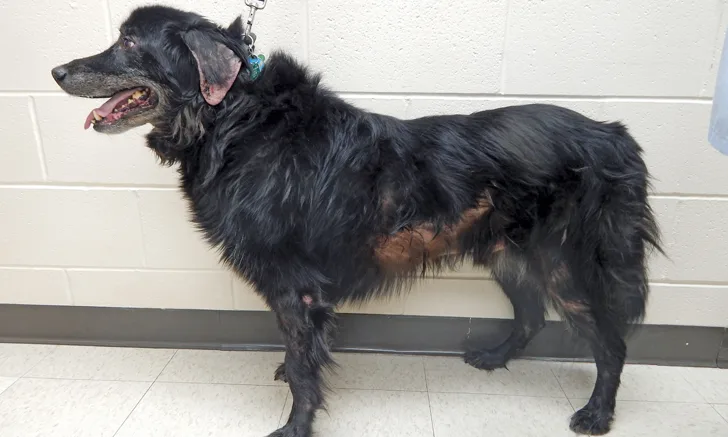Fluralaner for Treating Canine Scabies
Karen A. Moriello, DVM, DACVD, University of Wisconsin–Madison

In the Literature
Romero C, Heredia R, Pineda J, et al. Efficacy of fluralaner in 17 dogs with sarcoptic mange. Vet Dermatol. 2016;27(5):353-e88.
The Research …
Sarcoptes scabiei (scabies) is a contagious and zoonotic mite infestation that affects a wide range of hosts, including dogs.
This clinical trial evaluated the efficacy of a single dose of oral fluralaner (25 mg/kg) for treating scabies in 17 dogs with positive skin scrapings for Sarcoptes scabiei. By 7 days posttreatment, 10/17 dogs were negative on skin scraping; all dogs were negative by 14 days posttreatment. Lesions and pruritus resolved by day 28 of the study. No adverse events were reported.
Fluralaner is an isoxazoline, a new class of antiparasitic agent that inhibits γ-aminobutyric acid (GABA) chloride channels and l-glutamate chloride channels.1 Fluralaner, sarolaner, and afoxolaner are flea-control products that have also been found highly effective against scabies in dogs clinically.2-4 Orally or topically administered fluralaner is effective against scabies. Neither water immersion nor shampooing lessened the 12-week efficacy of topical fluralaner formulation for fleas.5
… The Takeaways
Key pearls to put into practice:
Fluralaner either as a topical or oral formulation is effective against fleas and ticks; the topical formulation is effective even if the dog becomes wet or is bathed.
Fluralaner, when used as directed on the label for fleas and ticks, is an effective treatment for canine scabies. The rapid mite kill will help limit transmission of the disease.
Fluralaner flea and tick preventive is a good option for dogs at high risk for exposure to scabies mites and/or to prevent reinfestation.